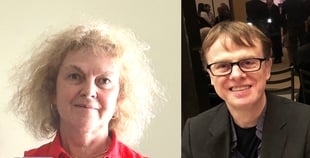

ANIMAFEST SCANNER X | SYMPOSIUM FOR CONTEMPORARY ANIMATION STUDIES | PANEL 3 – ANIMATION ASSISTING OTHER ART FORMS
WORKSHOPPING ART/SCIENCE ACTIVITIES FOR A TRAVELLING ASTRO-ANIMATION STEAM EXHIBITION Laurence Arcadias (University of Maryland, Baltimore, USA) Robin Corbet (University of Maryland, Baltimore, USA)
PANEL 3 – ANIMATION ASSISTING OTHER ART FORMS
Theatre &TD
07/06 WED 11:00-11:30
For several years our students at the Maryland Institute College of Art have worked with NASA astronomers, to produce animations inspired by cutting-edge research. The results can be whimsical or poetic, but constrained by scientific rigor. The animations have been used for scientific outreach and educational purposes and can be seen on astroanimation.org. A few years ago, we received a National Endowment for the Arts grant to conduct research to evaluate our program and received positive responses. Building on our success, we are now developing a traveling pop-up astro-animation exhibition to be used for informal STEAM learning in unusual locations such as train stations or marketplaces. We aim to attract teenagers from underrepresented communities who may not have been exposed to astronomy or consider STEAM as a potential option for study. ‘Science anxiety’ has been reported to be a significant barrier to learning. By mixing animation with astronomy, our project has the capability to reach out and stimulate interest in STEAM, making animation and science engaging in an unconventional way. An important component of the exhibition will be hands-on activities where participants will be invited to create their own artistic responses to the science with the help of a facilitator. To perform an initial test of these and evaluate their effectiveness, we carried out a workshop at the Baltimore School for the Arts, a top performing arts high school, in coordination with animation teachers and their students. We spent a few days brainstorming the animation/science activities for students aged fourteen to seventeen. During two classes, we gave short scientific presentations on black holes, asteroids and comets, and supernovae that led to three types of art activities: a giant coloring wall with projected celestial phenomena, a stop-motion station, and an augmented animation film of a comet. For the comet animation, students colored in images of the printed film and turned it into an animation. This work is supported by the Maryland Space Business Roundtable, the MICA Animation Department, and NASA under award number 80GSFC21M0002.
Laurence Arcadias as an animation professor at the Maryland Institute College of Art (MICA) in Baltimore, served as the department chair for over 12 years. Her animation films have toured in numerous festivals around the world and received several awards. Her previous work includes being an animation film director for French television programs. She taught at numerous colleges and used her animation skills at several technology companies around Silicon Valley. She co-initiated an astro-animation class in collaboration with NASA scientists. She has pursued her own artistic work and secured funding from outside sources to undertake her personal research in the intersections between science and art. She wants to explore how this program can be expanded in new directions and investigate how to bring animation and astronomy to underrepresented groups.
Robin Corbet obtained a PhD in high-energy astrophysics from University College London at their Mullard Space Science Laboratory. He subsequently continued his astronomical research at Oxford University, the Japanese Institute of Space and Astronautical Science, and Pennsylvania State University. He is now a Senior Research Scientist at the University of Maryland, Baltimore County, based at the NASA Goddard Space Flight Center where he works with the Fermi Gamma-ray Space Telescope, and an adjunct professor at the Maryland Institute College of Art. His research centers on binary star systems containing black holes or neutron stars, where the incredibly strong gravitational and magnetic fields result in the production of X-rays and gamma rays. At MICA, Robin Corbet co-teaches the astro-animation class, and he seeks ways to build bridges between science and art.


